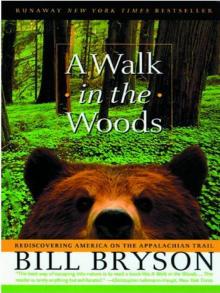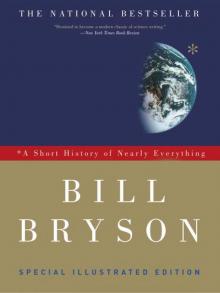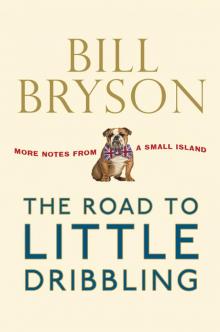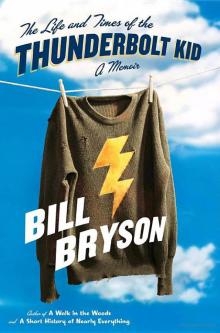- Home
- Bill Bryson
The Best American Travel Writing 2016
The Best American Travel Writing 2016 Read online
Contents
* * *
Title Page
Contents
Copyright
Foreword
Introduction
MICHAEL CHABON. White Guy in a Djellaba
SARA CORBETT. “How Can We Find More People Like You?”
DAVE EGGERS. The Actual Hollister
GRETEL EHRLICH. Rotten Ice
WILLIAM FINNEGAN. Off Diamond Head
ALICE GREGORY. Climb Every Mountain
PICO IYER. The Foreign Spell
ANDREW W. JONES. The Marlboro Men of Chernivtsi
KEA KRAUSE. What’s Left Behind
HELEN MACDONALD. Hiding from Animals
PATRICIA MARX. About Face
D. T. MAX. A Cave with a View
FREDA MOON. Born to Travel
MITCH MOXLEY. The Reddest Carpet
JUSTIN NOBEL. Growing Old with the Inuit
STEPHANIE PEARSON. The Green Heaven
TONY PERROTTET. Darwin’s Forgotten World
STEVEN RINELLA. Little Things That Kill You
DAVID ROWELL. Swiss Dream
PATRICK SYMMES. Peak Havana
JEFFREY TAYLER. Fyodor’s Guide
PAUL THEROUX. Return of the Mockingbird
WILLIAM T. VOLLMANN. Invisible and Insidious
THOMAS CHATTERTON WILLIAMS. In Another Country
Contributors’ Notes
Notable Travel Writing of 2015
Read More from The Best American Series®
About the Editors
Copyright © 2016 by Houghton Mifflin Harcourt Publishing Company
Introduction copyright © 2016 by Bill Bryson
ALL RIGHTS RESERVED
The Best American Series® is a registered trademark of Houghton Mifflin Harcourt Publishing Company. The Best American Travel Writing™ is a trademark of Houghton Mifflin Harcourt Publishing Company.
No part of this work may be reproduced or transmitted in any form or by any means, electronic or mechanical, including photocopying and recording, or by any information storage or retrieval system without the proper written permission of the copyright owner unless such copying is expressly permitted by federal copyright law. With the exception of nonprofit transcription in Braille, Houghton Mifflin Harcourt is not authorized to grant permission for further uses of copyrighted selections reprinted in this book without the permission of their owners. Permission must be obtained from the individual copyright owners as identified herein. Address requests for permission to make copies of Houghton Mifflin Harcourt material to Permissions, Houghton Mifflin Harcourt Publishing Company, 3 Park Avenue, 19th Floor, New York, NY 10016.
www.hmhco.com
ISSN 1530-1516
ISBN 978-0-544-81209-3
eISBN 978-0-544-81216-1
v1.0816
Cover design by Christopher Moisan © Houghton Mifflin Harcourt
Cover photograph © Radius/SuperStock
“White Guy in a Djellaba” by Michael Chabon. First published in Bon Appétit, May 2015. Copyright © 2015 by Michael Chabon. All rights reserved. Reprinted by arrangement with Mary Evans Inc.
“How Can We Find More People Like You?” by Sara Corbett. First published in the New York Times Magazine, February 22, 2015. Copyright © 2015 by Sara Corbett. Reprinted by permission of Sara Corbett.
“The Actual Hollister” by Dave Eggers. First published in The New Yorker, July 20, 2015. Copyright © 2015 by Dave Eggers. Reprinted by permission of Dave Eggers and The New Yorker.
“Rotten Ice: Traveling by Dogsled in the Melting Arctic” by Gretel Ehrlich. First published in Harper’s Magazine,Small caps April 2015. Copyright © 2015 by Harper’s Magazine. All rights reserved. Reproduced from the April issue by special permission.
“Off Diamond Head” by William Finnegan. First published in The New Yorker, June 1, 2015. Copyright © 2015 by William Finnegan. Reprinted by permission of William Finnegan.
“Climb Every Mountain” by Alice Gregory. First published in T Magazine, November 15, 2015. Copyright © 2015 by Alice Gregory. Reprinted by permission of Alice Gregory.
“The Foreign Spell” by Pico Iyer. First published in Lapham’s Quarterly, Winter 2015. Copyright © 2015 by Pico Iyer. Reprinted by permission of Lapham’s Quarterly.
“The Marlboro Men of Chernivtsi” by Andrew W. Jones. First published in the Morning News, February 10, 2015. Copyright © 2015 by Andrew W. Jones. Reprinted by permission of Andrew W. Jones.
“What’s Left Behind” by Kea Krause. First published in the Believer, Fall 2015. Copyright © 2015 by Kea Krause. Reprinted by permission of Kea Krause.
“Hiding from Animals” by Helen Macdonald. First published in the New York Times Magazine, July 19, 2015. Copyright © 2015 by the New York Times. All rights reserved. Used by permission and protected by the copyright laws of the United States. The printing, copying, redistribution, or retransmission of this content without express written permission is prohibited.
“About Face” by Patricia Marx. First published in The New Yorker, March 23, 2015. Copyright © 2015 by Patricia Marx. Reprinted by permission of Patricia Marx.
“A Cave with a View” by D. T. Max. First published in The New Yorker, April 27, 2015. Copyright © 2015 by D. T. Max. Reprinted by permission of D. T. Max.
“Born to Travel” by Freda Moon. First published in AFAR, November/December 2015. Copyright © 2015 by Freda Moon. Reprinted by permission of Freda Moon.
“The Reddest Carpet” by Mitch Moxley. First published in GQ, March 2015. Copyright © 2015 by Mitch Moxley. Reprinted by permission of Mitch Moxley.
“Growing Old with the Inuit” by Justin Nobel. First published in Nowhere, April 2015. Copyright © 2015 by Justin Nobel. Reprinted by permission of the author.
“The Green Heaven” by Stephanie Pearson. First published in Outside, February 2015. Copyright © 2015 by Stephanie Pearson. Reprinted by permission of Stephanie Pearson.
“Darwin’s Forgotten World” by Tony Perrottet. First published in Smithsonian, January 2015. Copyright © 2015 by Tony Perrottet. Reprinted by permission of Smithsonian magazine.
“Little Things That Kill You” by Steven Rinella. First published in Outside, July 2015. Copyright © 2015 by Steven Rinella. Reprinted by permission of Outside magazine/Steven Rinella.
“Swiss Dream” by David Rowell. First published in the Washington Post Magazine, March 22, 2015. Copyright © 2015 by the Washington Post. Reprinted by permission of the Washington Post. Lyrics from “Swiss Lady” are reprinted by kind permission of Peter Reber, songwriter, and Edition Taurus, music publisher.
“Peak Havana” by Patrick Symmes. First published in Outside, October 2015. Copyright © 2015 by Patrick Symmes. Reprinted by permission of Patrick Symmes.
“Fyodor’s Guide” by Jeffrey Tayler. First published in the Atlantic, January/February 2015. Copyright © 2015 by Jeffrey Tayler. Reprinted by permission of Jeffrey Tayler.
“Return of the Mockingbird” by Paul Theroux. First published in Smithsonian, July 2015. Copyright © 2015 by Paul Theroux. Reprinted by permission of the Wylie Agency, LLC.
“Invisible and Insidious” by William T. Vollmann. First published in Harper’s Magazine, March 2015. Copyright © 2015 by William T. Vollmann. Reprinted by permission of William T. Vollmann.
“In Another Country” by Thomas Chatterton Williams. First published in Smithsonian Journeys Quarterly, Paris issue, Spring 2015. Copyright © 2015 by Thomas Chatterton Williams. Reprinted by permission of Thomas Chatterton Williams.
Foreword
When I first lived in Italy, and for years afterward, it seemed that many Italians could not pronounce my first name correctly. Even to this
day, when I introduce myself as “Jason” to a non-English-speaking Italian, there’s a strong chance he or she will reply, “Jackson?” Actually, for a long time what many people said was, “Jackson? Like Michael Jackson?” And they would often raise an eyebrow, and smirk. Some would nod their heads expectantly, as if they were waiting for me to say, Yes, yes. You’ve unmasked me. I am actually not a short white guy from New Jersey, but rather I am the King of Pop. Please, allow me to moonwalk for you. In the years since he passed away, the Michael Jackson confusion doesn’t happen so much anymore. But until only the past few years, whenever I booked hotel or car rentals, or made dinner reservations, or told my phone number to someone as they typed it into a phone, it was still a 60–40 chance that I would be identified as Jackson Wilson.
One night about a decade ago, my friend Daniella and several of her cousins took me to a pizzeria in a village in the province of Cremona. We were looking at a huge chalkboard full of pizza choices. Everyone ordered, and I was taking a little too long with my decision-making, and so they began to fuss in that endearing Italian way. “What? You don’t see anything you like? Do you need a translation? Should we order for you?” Finally, Daniella said, a tad impatiently, “If you don’t see a pizza you like, they’ll make any pizza you want.” The waiter, also impatiently, reiterated this.
At that moment, for some reason, my eye lighted on the word “Gorgonzola” and then the word “pear” flittered into my brain. Gorgonzola and pears. That sounded good. It didn’t seem any stranger than the “Hawaii” pizza or the “Texas BBQ” pizza on the chalkboard. And so I verbalized this: “May I have my pizza with Gorgonzola and pear?”
All conversation stopped. The waiter looked at me as if I might be mentally incompetent. He looked beseechingly at my companions as if I needed special help with my Italian. But no, I repeated my order. He rubbed his stomach as if he were ill.
Everyone at the table burst out laughing. Who ever heard of a pizza like that? Gorgonzola! And pears! That’s the craziest pizza we’ve ever heard of! Ah, Jason! Always the mischief-maker!
All through dinner it went on. Every time the waiter came over, the family laughed and apologized: “Ah, he’s American, you see. Don’t be alarmed.” I offered samples to everyone at the table, just to show them how good the pizza really was—and it was very good. But none of them would entertain one bite.
Near the end of the meal, the chef came out of the kitchen to see who was actually eating a pizza with Gorgonzola and pear. That’s when everyone suggested, with a laugh, that this pizza should have a name: “Pizza Jason.”
Except, here’s the thing—when the chef repeated the name, he called it “Pizza Jackson” and wrote it on the chalkboard just like that. So if you happened to be passing through this small village in the province of Cremona, and for some reason you wanted a pizza that has Gorgonzola and pear, you had to ask for a Pizza Jackson.
I quite enjoy this kind of cultural misunderstanding, and usually don’t correct it. Being called Jackson reminds me that despite its familiarity to Americans like me, Italy is a strange and foreign place, still full of surprises and new discoveries. In a sense, becoming Jackson remystifies Italy for me.
This process is similar to what happens every late fall when I embark on my annual reading of the year’s travel writing. The best pieces I come across almost always remystify the world for me in some way, either big or small. Sadly, too much of the writing I read, and much of what we see in consumer travel magazines and newspaper travel sections, seems bent on demystifying travel. These pieces often employ a faux narrative, but their end goal is to break down some city or some experience or some mode of transportation into digestible, practical bites. These service roundups with their itineraries and lists and tips and charticles are generally competent, and probably serve their basic purpose. But they always leave me wanting more.
I’ve always been drawn instead to the deeper notion of travel espoused by Pico Iyer, a contributor to this year’s anthology, who once wrote: “Travel is like love, mostly because it’s a heightened state of awareness, in which we are mindful, receptive, undimmed by familiarity and ready to be transformed. That is why the best trips, like the best love affairs, never really end.” All love affairs, all long-term relationships—travel included—demand that we keep an element of mystery alive and kicking.
These are the kinds of pieces I hope you find on the pages within this year’s anthology.
The stories included here are, as always, selected from among hundreds of pieces in hundreds of diverse publications—from mainstream and specialty magazines to Sunday newspaper travel sections to literary journals to travel websites. I’ve done my best to be fair and representative, and in my opinion the best travel stories from 2015 were forwarded to guest editor Bill Bryson, who made our final selections.
Bill was the inaugural guest editor of this series (going way back to the 2000 edition), and it was just as much of an honor to work with him the second time around. The world has changed a great deal since Y2K, obviously. But I think you’ll find that the key characteristics of great travel writing never really change. I’d also like to thank Tim Mudie, at Houghton Mifflin Harcourt, for his help in producing this year’s outstanding collection, our 17th. I hope you enjoy it.
I now begin anew by reading the hundreds of stories published in 2016. As I have for years, I am asking editors and writers to submit the best of whatever it is they define as travel writing. These submissions must be nonfiction, published in the United States during the 2016 calendar year. They must not be reprints or excerpts from published books. They must include the author’s name, date of publication, and publication name, and must be tear sheets, the complete publication, or a clear photocopy of the piece as it originally appeared. I must receive all submissions by January 1, 2017, in order to ensure full consideration for the next collection.
Further, publications that want to make certain their contributions will be considered for the next edition should make sure to include this anthology on their subscription list. Submissions or subscriptions should be sent to Jason Wilson, Best American Travel Writing, 230 Kings Highway East, Suite 192, Haddonfield, NJ 08033.
Jason Wilson
Introduction
My favorite place in the world these days is a discreet but venerable institution on St. James’s Square in London called the London Library. Founded in 1841, it’s a private (though not at all exclusive) library supported by its 7,000 or so members. The New York Times has called it “probably the greatest lending library in the world.” As you would expect of any building that smells of leather and old paper and contains a million volumes, it’s just the most wonderful place. I would live there if they would let me bring a bed in.
Among its many other delights, the London Library has the most satisfyingly idiosyncratic system of organizing books, reflecting in the most arresting way the breadth and peculiarity of interests of its members over a long period. Under the broad category “Science &c.,” for instance, “Horse-Shoeing” stands beside “Human Sacrifice.” “Sex” comes between “Seashells” and “Sewage.” “Vinegar” is twinned with “Vivisection.” It can take years to learn your way around, but it is also delightfully productive because you constantly encounter subjects you would never have thought of looking into.
Thus it was recently, while browsing through books on the Western Isles of Scotland, that I chanced upon British Lighthouses: Their History and Romance, by J. Saxby Wryde, published in London in 1913, and therein learned the remarkable true story of the disappearing lighthouse keepers of Eilean Mòr.
Like most people, I had never heard of Eilean Mòr. It is a remote and lonely island, part of a small archipelago known as the Flannan Isles, some 20 miles out in the cold gray waters of the North Atlantic Ocean off Scotland’s rugged northwest coast. Its one forgotten moment of attention came in December 1900, when the island’s three lighthouse men, its only occupants, vanished without a trace, for no apparent reason. Their
names were Thomas Marshall, James Ducat, and Donald McArthur, and to this day no one knows what became of them.
All that can be said is that on the evening of December 15, the lighthouse light failed to come on, and it remained dark for several nights more until a relief crew could be dispatched from the Isle of Lewis, the nearest landmass of consequence. On arrival, the relief party found Eilean Mòr eerily quiet. No one greeted them at the jetty or answered their calls. In the lighthouse kitchen, a chair had been knocked over, but otherwise all appeared almost spookily normal. Lunch had been prepared and served but not eaten. In the men’s quarters, the beds had been made. In the tower, the light had been cleaned and readied for that night’s service. In an outer vestibule, two sets of oilskins were missing from their hooks, but the third set was untouched.
According to one account, the relief team found a logbook that contained this sequence of entries:
December 12: Gale north by northwest . . . Waves very high . . . Ducat quiet. Donald McArthur crying.
December 13: Noon, grey daylight. Me, Ducat and McArthur prayed.
December 14: no entry.
December 15: Storm ended, sea calm. God is over all.
That was the last entry.
In the century since the men vanished, many theories have been proposed to explain what happened—that they went to the landing stage to secure some piece of equipment and were swept away by a rogue wave, that one of them killed the other two and then himself—but all fall short of convincing plausibility. The seas off Eilean Mòr had a lot of passing ship traffic—that’s why there was a lighthouse there—and none of them had reported any big waves or other unusual phenomena. The men themselves were all of equable disposition and had worked together without rancor for more than a year. Even if it was a murder-suicide, it was not easy to explain how the murderer had killed himself and then disposed of his own body. It wasn’t even easy to imagine a calamity that would compel all three men to get up from their lunch and rush out—one of them without putting on rainwear.

 Notes from a Small Island
Notes from a Small Island A Short History of Nearly Everything
A Short History of Nearly Everything A Walk in the Woods
A Walk in the Woods I'm a Stranger Here Myself
I'm a Stranger Here Myself The Mother Tongue
The Mother Tongue Shakespeare
Shakespeare A Short History of Nearly Everything: Special Illustrated Edition
A Short History of Nearly Everything: Special Illustrated Edition The Best American Travel Writing 2016
The Best American Travel Writing 2016 The Road to Little Dribbling
The Road to Little Dribbling The Life And Times Of The Thunderbolt Kid: A Memoir (v5.0)
The Life And Times Of The Thunderbolt Kid: A Memoir (v5.0) Made In America
Made In America Seeing Further
Seeing Further Shakespeare: The World as Stage
Shakespeare: The World as Stage The Life and Times of the Thunderbolt Kid
The Life and Times of the Thunderbolt Kid At Home
At Home Bryson's Dictionary For Writers And Editors (v5.0)
Bryson's Dictionary For Writers And Editors (v5.0) Neither Here Nor There
Neither Here Nor There Bill Bryson's African Diary
Bill Bryson's African Diary